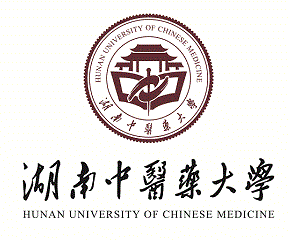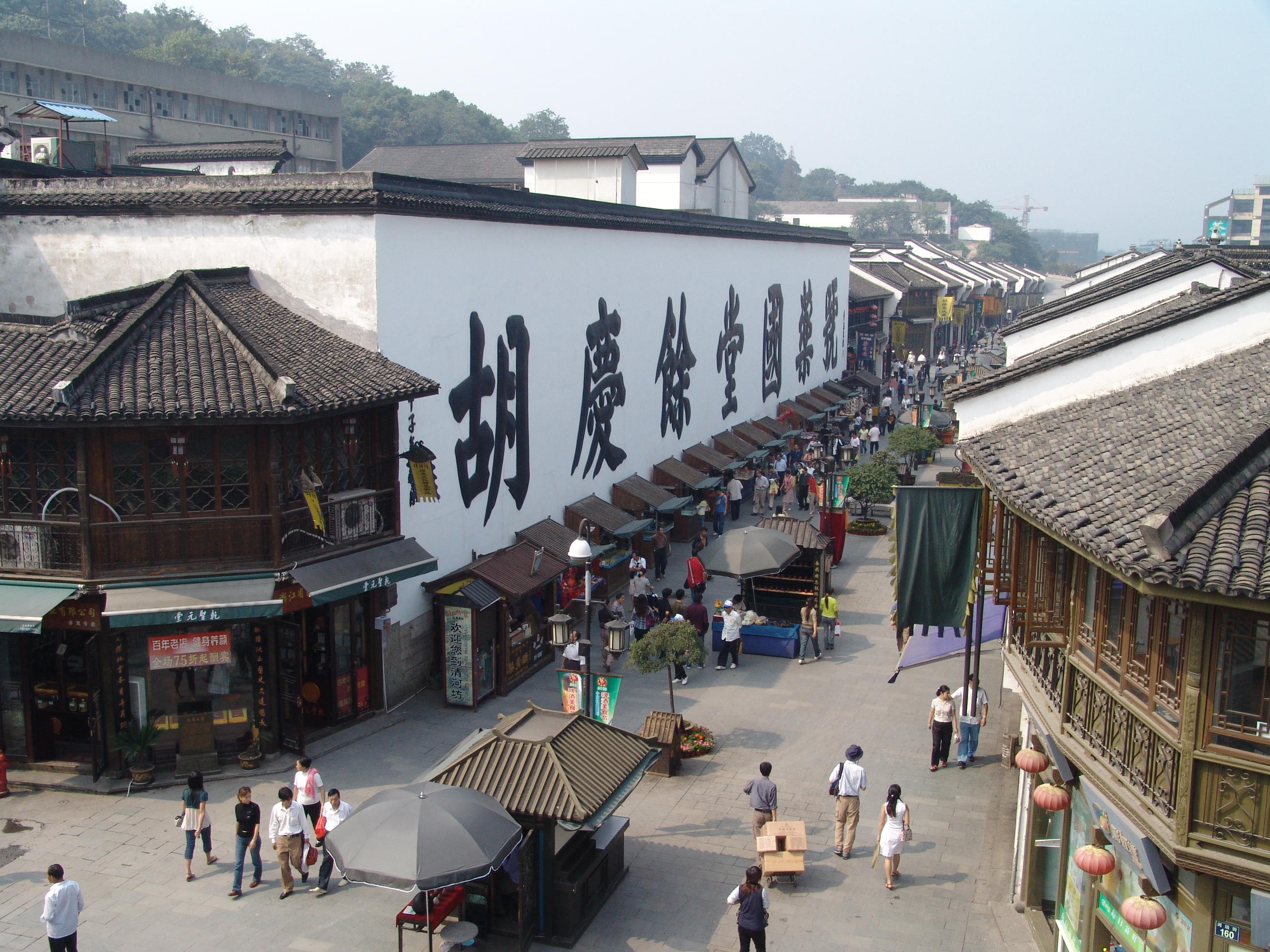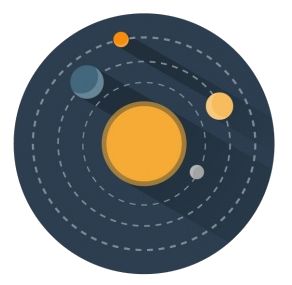
Deutsch-Chinesische Enzyklopädie, 德汉百科
 传统医学
传统医学


黄庭经指《太上黄庭内景玉经》和《太上黄庭外景玉经》,约出于魏晋之际,收入《正统道藏》洞玄部本文类,大旨在于服气以养精神。主张固守精神,则身形可以长存[1]。《内景经》乃道教上清一脉修习要典,据传为上清仙真降授于南岳魏华存,后来成为宋元内丹家修炼内丹的重要典籍。早期意见主张内景经较为早出[2][3],不过有学者认为从用韵来看,《外景经》之韵例比《内景经》更古更早;《外景经》也与早期天师道关系密切,实为内景经的源流[4][5][6]。
黄庭外、内二经,《外景经》一百九十六句,分为上中下三经或二十四章,《内景经》四百三十七句,分为三十六章,均是规整的七言韵语,各版本异文甚多,句之多少、有无及次序先后,各有不同[5]。
是书以韵语描述人体五官、五脏、六腑以及全身八景诸神二十四真形象与作用,旨在存神内观,固精练气,填满黄庭,久而行之,则五脏生华、色返孩童,最后臻至长生久视之境。

Gemeinhin wird in neuerer Zeit das Huang Di Nei Jing als das "Buch des Gelben Kaisers zur Inneren Medizin" (Nei Jing) übersetzt. Joseph Needham zufolge bezieht sich die Unterscheidung zwischen Nei (Innen) und Wai (Außen) auf die klassische Aussage der Daoisten, dass sie "außerhalb der Gesellschaft wandeln", dass der Bereich der Weisen "außerhalb von Zeit und Raum" liegt. Innen (Nei) steht deshalb für alles Innerweltliche, Rationale, Praktische, Konkrete, Wiederholbare, Verifizierbare, Wissenschaftliche. Außen (Wai) bedeutet alles Außerweltliche, alles was mit Göttern und Geistern, mit Weisen und Unsterblichen zu tun hat, alles Außergewöhnliche, Wunderbare, Fremde, Ungewohnte, nicht Irdische, Außerkörperliche oder Unkörperliche.
Als korrekte Übersetzung schlägt Needham deshalb "Buch des Gelben Kaisers der praktischen Medizin" vor, zumal in den alten Bibliographien auch ein Huang Di Wai Jing ("Buch des Gelben Kaisers zur außerphysischen Medizin") erwähnt wird, dass allerdings schon vor vielen Jahrhunderten verloren ging und, wie Needham vermutet, die magisch-religiösen Aspekte der chinesischen Medizin beinhaltet hat.
Eine spätere Unterscheidung, die jedoch nicht weiter zurückreicht als in die Zeit der Song-Dynastie (420 - 479) unterscheidet zwischen "innerer Medizin", die der internen und allgemeinen Medizin im heutigen Sinne entspricht, und "externer Medizin", die neben chirurgischen Behandlungen auch Dermatologie (Behandlung von Verbrennungen, Hautausschlägen etc.) und die Behandlung von Brüchen und Ausrenkungen umfasst. Diese Klassifizierungen der Medizin, die in der Ming-Zeit (1368 - 1644) bis auf 13 Spezialrichtungen erweitert wurden, haben jedoch, so Needham, keine Gemeinsamkeiten mit den Unterscheidungen von Nei Jing und Wai Jing des Huang Di Nei Jing.
Das Huángdì Nèijīng (chin. 黄帝内經), auch als Nèijīng (内經) bekannt, ist eines der ältesten Standardwerke der chinesischen Medizin. Es wird unter anderem als "Innerer Klassiker des Gelben Fürsten", "Buch des Gelben Kaisers zur Inneren Medizin" und "Die Medizin des Gelben Kaisers" übersetzt und besteht aus zwei großen Teilen. Dieses medizinische Fachwerk ist bis heute grundlegend und richtungsweisend für die Ausbildung innerhalb der chinesischen Medizin. Es wurde von der UNESCO in die Liste des Weltdokumentenerbes aufgenommen.[1]
Seit der Han-Dynastie (漢朝/Hàncháo – ca. 206 v. Chr. bis 220 n. Chr.) und der Jin-Dynastie (晋朝, Jìncháo–ca. 265–420 n. Chr.) bekannt als Jiǔjuàn (九卷 - „9 Bände“) oder Zhēnjīng (针经 - „Meridian“)
Seit der Tang-Dynastie (唐朝/Tángcháo - ca. 618–907 n. Chr.) bekannt als Língshū (灵枢 - „Angelpunkt der Struktivkraft“)[2]
Das Gesamtwerk des Huángdì Nèijīng gliedert sich in 18 Bände, die aus insgesamt 162 Kapiteln bestehen. Die ersten neun Bände beinhalten das Huángdì Nèijīng Sùwèn (黄帝内经素问) - oder kurz Sùwèn (素问). Übersetzt wird dieser Teil mit "einfache Fragen" oder „unbefangene Fragen“. Dort behandelt Huángdì im Gespräch mit seinem Meister Qí Bó (岐伯) vor allem die Naturgesetzmäßigkeiten zwischen Mensch und Natur, Mensch und Himmel und wie man alle Kräfte in Harmonie miteinander bringen kann. Diese Fragen und Erkenntnisse bilden das Fundament der grundlegenden Philosophie der chinesischen Medizin.[3]
Die weiteren neun Bände wurden erst im Laufe der Jahrhunderte hinzugefügt und waren auch immer unter anderen Bezeichnungen bekannt (siehe Entstehungsgeschichte). Seit der Tang-Dynastie werden diese Bände als „Língshū“ („Angelpunkt der Struktivkraft“) bezeichnet und beschäftigen sich vor allem mit der äußeren Anwendung von Therapieformen wie der Akupunktur und Moxibustion sowie der Organ- und Meridian-Theorie.
《黄帝内经》在主流社会认为是现存最早中医理论著作,对后世中医学理论的奠定有深远的影响。此书相传是黄帝与岐伯、雷公、伯高、俞跗、少师、鬼臾区、少俞等多位大臣讨论医学的记述,在四库全书中为子部医家类。
《黄帝内经》(简称《内经》)成书约于战国至秦汉时期,在东汉至隋唐时期仍继续修订和补充。《内经》包括《素问》和《灵枢》两部分,共18卷162篇。该书不仅奠定了中医学理论基础,也是中医学理论与实践等方面发展的基石[1]。 西汉汉成帝时,刘向等人曾大规模校理古籍,李柱国则负责校理方伎,原书目先载于刘向《别录》,后载于其子刘歆《七略》,今二书已佚,但其目录内容被东汉班固引录于《汉书》〈艺文志〉中,后世仍可以推见其原貌。《汉书·艺文志·方技略》载有医经、经方、神仙和房中四种中医典籍。
『黄帝内経』(こうていだいけい、こうていだいきょう、こうていないけい、黄帝内剄)は、現存する中国最古の医学書と呼ばれている。古くは『鍼経』(しんきょう)9巻と『素問』(そもん)9巻があったとされているが、これら9巻本は散逸して現存せず、現在は王冰(おうひょう)の編纂した『素問』と『霊枢』(れいすう)が元になったものが伝えられている。黄帝が岐伯(きはく)を始め幾人かの学者に日常の疑問を問うたところから『素問』と呼ばれ、問答形式で記述されている。『霊枢』は『鍼経』の別名とされ、『素問』が基礎理論とすると、『霊枢』は実践的、技術的に記述されている。
『黄帝内経』は、前漢代に編纂され、『鍼経』と『素問』の合計18巻と伝えられている。その内容は散逸して一旦は失われたが、762年唐の時代に王冰の表した『素問』と『霊枢』が伝えられている。現代の研究では『鍼経』もしくは『九霊』は『霊枢』(9巻)のことであるとされている。ただしこの9巻本も散逸してしまって残っていない。現在は1155年に南宋の史崧が霊枢を新たに校訂し、24巻81篇として編纂したものが元になっている。
『素問』が理論的であるのに対し、『霊枢』はより実践的に記述されている。『素問』の内容は医学にかぎらず、易学、天候学、星座学、気学、薬学、運命学と広くさまざまな分野に及び、医学書というより科学書と呼ぶべきであるという意見もあり、道教にとっても原典の一つとされる。現在、医学書とされている理由は、紀元前1世紀の図書目録である『漢書』「芸文志」に医書として分類されていることによる。
『内経』の原本は残っておらず、さまざまな写本が存在する。日本では京都の仁和寺に、日本最古の『黄帝内経太素』の写本が所蔵されている。『太素』(たいそ)は7世紀ころの写本で、唐代の楊上善が、『素問』と『霊枢』を合わせて編纂したものである。
『黄帝内経』18巻のうち、1部にあたる9巻を『鍼経』と呼び、2部の9巻を『素問』と呼ぶ。『鍼経』は経脈、経穴、刺鍼、また営衛、気血など系統的で詳細に説明されている。ここで9という数字には意味があり、古代中国において、数は1から始まり9で終わるとされていた。すなわち1巻には1章から9章が記述され、9章の次は2巻となる。1部は9巻×9章で81章で一まとまりとなり、『黄帝内経』は2部構成であった。『素問』は、古くは紀元前202年の前漢代の頃から編纂され始めたと考えられている。
現存する『素問』は、762年に王冰によって編纂された。王冰はそれ以前の『素問』を大幅に変更したことがわかっており、王冰の『素問』からは古い『素問』を伺い知ることはできないと批判されている。
『霊枢』は『素問』より新しい時代のもので、20年から200年ころ編纂された。『素問』より前に『鍼経』が編纂され、それが後に『霊枢』に引き継がれたと考えられている。「芸文志」には、『内経』(18巻)の他に『外経』(37巻)があったとの記録があるが、『外経』は現存せず、詳しいことはわかっていない。
Huangdi Neijing (simplified Chinese: 黄帝内经; traditional Chinese: 黃帝內經; pinyin: Huángdì Nèijīng), literally the Inner Canon of the Yellow Emperor or Esoteric Scripture of the Yellow Emperor, is an ancient Chinese medical text that has been treated as the fundamental doctrinal source for Chinese medicine for more than two millennia. The work is composed of two texts—each of eighty-one chapters or treatises in a question-and-answer format between the mythical Yellow Emperor and six of his equally legendary ministers.
The first text, the Suwen (素問), also known as Basic Questions,[1] covers the theoretical foundation of Chinese Medicine and its diagnostic methods. The second and generally less referred-to text, the Lingshu (靈樞; Spiritual Pivot), discusses acupuncture therapy in great detail. Collectively, these two texts are known as the Neijing or Huangdi Neijing. In practice, however, the title Neijing often refers only to the more influential Suwen.
Two other texts also carried the prefix Huangdi Neijing in their titles: the Mingtang (明堂; Hall of Light) and the Taisu (太素; Grand Basis), both of which have survived only partially.
The earliest mention of the Huangdi Neijing was in the bibliographical chapter of the Hanshu 漢書 (or Book of Han, completed in 111 CE), next to a Huangdi Waijing 黃帝外經 (“Outer Canon of the Yellow Emperor”) that is now lost. A scholar-physician called Huangfu Mi 皇甫謐 (215-282 CE) was the first to claim that the Huangdi Neijing in 18 juan 卷 (or volumes) that was listed in the Hanshu bibliography corresponded with two different books that circulated in his own time: the Suwen and the Zhenjing 鍼經 (“Needling Canon”), each in 9 juan.[2] Since scholars believe that Zhenjing was one of the Lingshu's earlier titles, they agree that the Han-dynasty Huangdi Neijing was made of two different texts that are close in content to the works we know today as the Suwen and the Lingshu.
The Yellow Emperor's Inner Classic (Huangdi Neijing, 黃帝內經) is the most important ancient text in Chinese medicine as well as a major book of Daoist theory and lifestyle. The text is structured as a dialogue between the Yellow Emperor and one of his ministers or physicians, most commonly Qíbó (Chinese: 岐伯), but also Shàoyú (Chinese: 少俞). One possible reason for using this device was for the (anonymous) authors to avoid attribution and blame (see pages 8-14 in Unschuld for an exposition of this).
The Neijing departs from the old shamanistic beliefs that disease was caused by demonic influences. Instead the natural effects of diet, lifestyle, emotions, environment, and age are the reason diseases develop. According to the Neijing, the universe is composed of various forces and principles, such as Yin and yang, Qi and the Five Elements (or phases). These forces can be understood via rational means and man can stay in balance or return to balance and health by understanding the laws of these natural forces. Man is a microcosm that mirrors the larger macrocosm. The principles of yin and yang, the five elements, the environmental factors of wind, damp, hot and cold and so on that are part of the macrocosm equally apply to the human microcosm.
Le Huangdi Nei Jing (黄帝内经) ou Classique interne de l'empereur Jaune est le plus ancien ouvrage de médecine chinoise traditionnelle. Il se divise en deux parties : le Su Wen et le Ling Shu. Tous les aspects de la médecine y sont abordés, avec leur traitement, et plus particulièrement le traitement par acupuncture. Il y est fait allusion à l'usage de poinçons de pierre qui auraient pu être utilisés avant l'apparition des aiguilles en métal : « Mon désir est […] qu'on ne se serve plus des antiques poinçons de pierre ». Cette méthode était appelée bian jiu1.
Huangdi Neijing, Libro Interno (o Esoterico) dell'Imperatore Giallo, è un antico trattato di medicina tradizionale cinese, attribuito a Huangdi.
In Cina è considerato come il testo medico più influente. Gli è stato assegnato il primo posto tra le opere di categoria incluse nel Ssu-k'u Ch'uan-shu, catalogo delle più importanti opere di letteratura antica, pubblicato nel 1772 sotto gli auspici del governo cinese.[1] È diviso in due tomi, lo Huangdi Neijing Suwen (le "Domande semplici"), abbreviato come Suwen 素問, e lo Huangdi Neijing Lingshu (Il "Perno spirituale") abbreviato come Lingshu 靈樞. Ogni tomo è, a sua volta, diviso in ottantuno capitoli; la trattazione è dialogica e discorsiva, caratterizzata dal confronto tra il leggendario Huangdi e sei dei suoi leggendari ministri imperiali. Il testo, in virtù del suo valore storico-culturale e medico, è comparabile al Corpus Hippocraticum greco, alle opere di Claudio Galeno ed alla trattazione di medicina medievale di ispirazione islamica (Averroè, Avicenna) ed europea.[2]
Sebbene alcune fonti storiche conformate alla leggenda considerino la stesura del Canone come risalente all'epoca imperiale gialla (2697 a.C.), la maggior parte degli storici cinesi sostiene che la redazione vera e propria del trattato sia contemporanea al periodo dei Regni Combattenti (453-222 a.C.) e prosegua fino alla dinastia degli Han posteriori (25-222 d.C.). In ogni caso i contenuti medici e filosofici del Canone risalgono ad un periodo antecedente la redazione del trattato. Alla luce di ciò, la tradizione cinese individua nella figura di Huang Di l'autore ed il redattore dell'opera.[3]
Ciò di cui si è certi è che il Lingshu sarebbe di poco anteriore al Suwen. I vari testi vennero poi divisi e riorganizzati da vari autori, fino a quando, nella dinastia Tang, Wang Bing (710-804 d.C.) organizzò il testo nella stesura che conosciamo oggi.
Nel Suwen 素問 il Maestro celeste Qi Bo risponde alle domande (wen, parte del titolo, dove Su sta per seta grezza, semplice, quindi le domande semplici, nel senso di basilari, fondamentali) di Huangdi. Nel rispondere alle domande, Qi Bo affronta sia la fisiologia (studio dei visceri e dei meridiani o tragitti d'animazione), sia l'eziologia, sia la diagnosi, sia la terapia.
Nel Lingshu 靈樞 si parla della relazione fondamentale dell'uomo con il Cielo, tramite gli Spiriti, si dice cioè che le attività terrene sono sempre basate su influssi celesti. Si potrebbe parlare di un trattato di psicologia cinese, se non fosse che la categoria della psiche non è presente nel mondo cinese (nel senso che una divisione tra psiche e soma non viene presentata). Il tutto viene esposto secondo la dottrina dello yin e dello yang e delle cinque fasi wuxing (五行), le categorie del qi che dal I secolo a.C. sono servite a declinarlo.
Huangdi Neijing ( chino simplificado : 黄帝内经 ; chino tradicional : 黃帝內經 ; pinyin : Huangdi Neijing ), también conocido como el Canon Interior de Huangdi o Canon interno del Emperador, es un antiguo texto médico chino que ha sido tratado como la fuente doctrinal fundamental para la medicina tradicional china desde hace más de dos milenios. El trabajo se compone de dos textos, cada uno de ochenta y un capítulos o tratados en un formato de preguntas y respuestas entre el mítico Huangdi (Emperador Amarillo o más correctamente Emperador) y seis de sus ministros igualmente legendarios.
El primer texto, el Suwen (素問), también conocido como Preguntas básicas,1 cubre el fundamento teórico de la medicina china y sus métodos de diagnóstico. El segundo y generalmente menos que se refiere al texto, el Lingshu (靈樞) (Spiritual Pívot), discute la terapia de la acupuntura con gran detalle. En conjunto, estos dos textos son conocidos como el Neijing o Huangdi Neijing. En la práctica, sin embargo, el título Neijing menudo se refiere sólo a la más influyente Suwen. Otros dos textos también llevan el prefijo Huangdi neijing en sus títulos: el Mingtang 明堂 ("Salón de la Luz") y el Taisu 太素 ("Gran base"), ambos de los cuales han sobrevivido sólo parcialmente.

《易经》是中国汉族最古老的文献之一[1],并被儒家尊为“五经”之始;一般说上古三大奇书包括《黄帝内经》、《易经》、《山海经》,但它们成书都较晚。《易经》以一套符号系统来描述状态的简易、变易、不易,表现了中国古典文化的哲学和宇宙观。它的中心思想,是以阴阳的交替变化描述世间万物。《易经》最初用于占卜和预报天气,但它的影响遍及中国的哲学、宗教、医学、天文、算术、文学、音乐、艺术、军事和武术等各方面,是一部无所不包的巨著。自从17世纪开始,《易经》也被介绍到西方。在四库全书中为经部,十三经中未经秦始皇焚书之害,它是最早哲学书。自从十七世纪开始,《易经》也被介绍到西方。
《易》原有三种版本:《连山》、《归藏》和《周易》[2],《连山》和《归藏》已经失传,一般所称《易经》即源于《周易》发展而来。
《易经》包括狭义的《周易》与《易传》。《周易》相传是依循周文王主编《易》的著述而来,成书大约在西周时期。由于随时代演变,《周易》文字含义到了春秋战国时代已经不便读懂,因此孔子撰写了“十翼”,后世又称为《易传》并列入《易经》。
Das I Ging, hist. Romanisierung, heute: Yijing (chinesisch 易經 / 易经, Pinyin Yìjīng, W.-G. I-Ching ‚Buch der Wandlungen od. Klassiker der Wandlungen‘) ist eine Sammlung von Strichzeichen und zugeordneten Sprüchen. Es ist der älteste der klassischen chinesischen Texte. Seine legendäre Entstehungsgeschichte wird traditionell bis in das 3. Jahrtausend v. Chr. zurückgeführt. Das Werk ist im Chinesischen allgemein auch als Zhouyi (周易, Zhōuyì ‚Wandlungen der Zhou‘) bekannt.
『易経』(えききょう、正字体:易經、拼音: )は、古代中国の書物。『卜』が動物である亀の甲羅や牛や鹿の肩甲骨に入ったヒビの形から占うものであるのに対して、『筮』は植物である『蓍[1]』の茎の本数を用いた占いである。商の時代から蓄積された卜辞を集大成したものとして易経は成立した。易経は儒家である荀子の学派によって儒家の経典として取り込まれた。現代では、哲学書としての易経と占術のテキストとしての易経が、一部重なりながらも別のものとなっている。中心思想は、陰陽二つの元素の対立と統合により、森羅万象の変化法則を説く。著者は伏羲とされている[2]。
中国では『黄帝内經』・『山海經』と合わせて「上古三大奇書」とも呼ぶ。
The I Ching (/ˈiː ˈdʒɪŋ/),[2] also known as Classic of Changes or Book of Changes, is an ancient Chinese divination text and the oldest of the Chinese classics. Possessing a history of more than two and a half millennia of commentary and interpretation, the I Ching is an influential text read throughout the world, providing inspiration to the worlds of religion, psychoanalysis, literature, and art. Originally a divination manual in the Western Zhou period (1000–750 BC), over the course of the Warring States period and early imperial period (500–200 BC) it was transformed into a cosmological text with a series of philosophical commentaries known as the "Ten Wings".[3] After becoming part of the Five Classics in the 2nd century BC, the I Ching was the subject of scholarly commentary and the basis for divination practice for centuries across the Far East, and eventually took on an influential role in Western understanding of Eastern thought.
The I Ching uses a type of divination called cleromancy, which produces apparently random numbers. Six numbers between 6 and 9 are turned into a hexagram, which can then be looked up in the I Ching book, arranged in an order known as the King Wen sequence. The interpretation of the readings found in the I Ching is a matter of centuries of debate, and many commentators have used the book symbolically, often to provide guidance for moral decision making as informed by Taoism and Confucianism. The hexagrams themselves have often acquired cosmological significance and paralleled with many other traditional names for the processes of change such as yin and yang and Wu Xing.
Le Yi Jing (sinogrammes 易经simpl./易經trad., pinyin yì jīng, Wade-Giles i4 ching1, également orthographié Yi King ou Yi-King), prononcé en français i ting est un manuel chinois dont le titre peut se traduire par « Classique des changements » ou « Traité canonique des mutations ». Il s'agit d'un système de signes binaires qui peut être utilisé pour faire des divinations. Le Yi Jing s'appelle aussi Zhou Yi (周易, pinyin : Zhōu Yì, Wade-Giles : Chou1 I4) c'est-à-dire « changements de Zhou » pour la raison que son élaboration date du Ier millénaire avant l'ère chrétienne, époque des Zhou (1027, 256 av. J.-C.).
Il occupe une place fondamentale dans l'histoire de la pensée chinoise et peut être considéré comme un traité unique en son genre dont la finalité est de décrire les états du monde et leurs évolutions. Premier des cinq classiques, il est donc considéré comme le plus ancien texte chinois.
Le Yi Jing est le fruit d'une recherche spéculative et cosmogonique élaborée, dont les articulations ont influencé durablement la pensée chinoise. Sa structure mathématique a impressionné Leibniz qui y aurait vu la première formulation de l'arithmétique binaire. De fait, partant d'une opposition/complémentarité entre les principes d'engendrement Yin et Yang (yin // réceptif // lune // femelle // passif alors que yang // créatif // soleil // mâle // actif) et subdivisant cette dualité de façon systématique (adret = côté au Soleil alors qu'ubac = côté à l'ombre ; vents favorables opposés aux nuages contraires), le Yi Jing arrive à la série des 64 figures qui peuvent interpréter toutes les transformations possibles.
« Le Yi-King ou Livre des transformations de l'archaïque magie chinoise apporte l'image la plus exemplaire de l'identité du Génésique et du Génétique. La boucle circulaire est un cercle cosmogonique symboliquement tourbillonnaire par le S intérieur qui à la fois sépare et unit le Yin et le Yang. La figure se forme non à partir du centre mais de la périphérie et naît de la rencontre de mouvements de directions opposés. Le Yin et le Yang sont intimement épousés l'un dans l'autre, mais distincts, ils sont à la fois complémentaires, concurrents, antagonistes. La figure primordiale du Yi-King est donc une figure d'ordre, d'harmonie, mais portant en elle l'idée tourbillonnaire et le principe d'antagonisme. C'est une figure de complexité. »
— Edgar Morin, La Méthode 1. La Nature de la Nature, p. 228, Seuil, Paris, 1977.
Il Libro dei Mutamenti[2] (易經T, 易经S, YìjīngP, I ChingW[3]), conosciuto anche come Zhou Yi 周易 o I Mutamenti (della dinastia) Zhou, è ritenuto il primo dei testi classici cinesi sin da prima della nascita dell'impero cinese. È sopravvissuto alla distruzione delle biblioteche operata dal Primo imperatore, Qin Shi Huang Di.
L'Yi Jing è diviso in due porzioni, jing 經 o 'classico' e zhuan 傳 o 'commentario', composti in momenti differenti ma tramandati come testo unico da due millenni circa. La porzione jing è composta da sessantaquattro unità, ognuna basata su un esagramma (gua 卦) composto di sei linee che sono o continue (⚊) rappresentanti il principio yang o interrotte (⚋) rappresentanti il principio yin. Per ogni esagramma vi è una spiegazione chiamata 卦辞 guaci, accompagnata dalla spiegazione delle singole linee costituenti il trigramma chiamate 爻辞 yaoci. I primi due esagrammi del testo 乾 qian e 坤 kun sono accompagnati da due ulteriori testi chiamati 用六 yongliu e 用九 yongjiu.
Considerato da Confucio libro di saggezza, è utilizzato a livello popolare a scopo divinatorio, e dagli studiosi per approfondire aspetti matematici, filosofici e fisici. I metodi per ottenere i responsi sono vari e si passa dai gusci di tartaruga al lancio di 3 monete. Quando si utilizzano gli steli di achillea per estrarre i responsi, l'arte divinatoria è chiamata achilleomanzia.
El I Ching, Yijing o I King (en chino tradicional: 易經; en chino simplificado: 易经; en pinyin: yì jīng) es un libro oracular chino cuyos primeros textos se suponen escritos hacia el 1200 a. C. Es uno de los Cinco Clásicos confucianos.
El término i ching significa ‘libro de las mutaciones’. El texto fue aumentado durante la dinastía Zhou y posteriormente por comentaristas de la escuela de Confucio, pero su contenido original es de procedencia taoísta, y no confucianista. Se cree que describe la situación presente de quien lo consulta y predice el modo en que se resolverá en el futuro si se adopta ante ella la posición correcta. Es un libro adivinatorio y también un libro moral, a la vez que por su estructura y simbología es un libro filosófico y cosmogónico.
«И цзин» (кит. трад. 易經, упр. 易经, пиньинь: Yì Jīng), или «Чжоу И»[1] (周易) — наиболее ранний из китайских философских текстов. Наиболее ранний слой, традиционно датируемый ок. 700 г. до. н. э.[2] и предназначавшийся для гадания, состоит из 64 гексаграмм. Во II веке до н. э. был принят конфуцианской традицией как один из канонов конфуцианского Пятикнижия.
«Кни́га Переме́н» — название, закрепившееся за «И цзин» на Западе. Более правильный, хоть и не столь благозвучный вариант — «Кано́н Переме́н».




 植物学
植物学

 历史
历史
 医疗、制药、 康复
医疗、制药、 康复




 建筑艺术
建筑艺术
 天文
天文

 信息时代
信息时代
 科学技术
科学技术